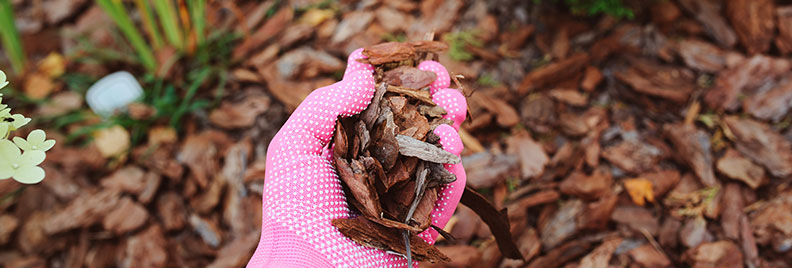
[fusion_builder_container hundred_percent=”no” hundred_percent_height=”no” hundred_percent_height_scroll=”no” hundred_percent_height_center_content=”yes” equal_height_columns=”no” menu_anchor=”” hide_on_mobile=”small-visibility,medium-visibility,large-visibility” class=”” id=”” background_color=”rgba(255,255,255,0)” background_image=”” background_position=”center center” background_repeat=”no-repeat” fade=”no” background_parallax=”none” enable_mobile=”no” parallax_speed=”0.3″ video_mp4=”” video_webm=”” video_ogv=”” video_url=”” video_aspect_ratio=”16:9″ video_loop=”yes” video_mute=”yes” video_preview_image=”” border_size=”” border_color=”” border_style=”solid” margin_top=”0px” margin_bottom=”” padding_top=”” padding_right=”” padding_bottom=”” padding_left=””][fusion_builder_row][fusion_builder_column type=”1_1″ layout=”1_1″ spacing=”” center_content=”no” link=”” target=”_self” min_height=”” hide_on_mobile=”small-visibility,medium-visibility,large-visibility” class=”” id=”” background_color=”#ffffff” background_image=”” background_position=”left top” undefined=”” background_repeat=”no-repeat” hover_type=”none” border_size=”0″ border_color=”” border_style=”solid” border_position=”all” padding_top=”30″ padding_right=”30″ padding_bottom=”30″ padding_left=”30″ margin_top=”0px” margin_bottom=”” animation_type=”” animation_direction=”left” animation_speed=”0.3″ animation_offset=”” last=”no”][fusion_title margin_top=”” margin_bottom=”” hide_on_mobile=”small-visibility,medium-visibility,large-visibility” class=”” id=”” size=”1″ content_align=”left” style_type=”default” sep_color=”rgba(224,222,222,0)”]
Winter Plant Protection in Texas
[/fusion_title][fusion_text]
Protect the Plants
Water the Roots
Winterize the Pots
Winterize the Lawn
[/fusion_text][fusion_text]Winter is a busy time of year. Between the kids’ Christmas concerts, holiday get-togethers, and the flurry of gift wrapping, it can seem impossible to get a moment to ourselves to even think about our outdoor landscape. As busy as we are, though, it’s important to make time to protect our plants for the winter. Winterizing may seem like a chore that we don’t have time for – and an odd task to think about in the warmer climates we have here in Houston – but it’s really not as daunting as it seems! Here are a few items to check of the to-do list:
Protect the Plants
The first step to protecting your plants is to keep them healthy during the growing season. Plants that have been given adequate nutrients and moisture while growing will be better equipped to withstand cooler winter temperatures.
Mulching will help protect the plants roots, especially if we happen to experience an odd ground freezing. Pull back all the old mulch to prepare for a new layer. Once that’s done, add another insulating 2-3 inch layer of loose mulch, such as a hardwood shredded mulch or pine needles. Mulching is also great to do if your garden has felt the impact of a hurricane.
As far as covering tender plants goes – don’t use plastic or cotton sheets!!! Plastic will suffocate your plants if it is left on too long and cotton sheets may actually freeze to your plants if precipitation is involved. Our best advice? Invest in insulated frost blankets. The insulate material will keep temperatures warmer underneath and still let the plants breathe. [/fusion_text][fusion_imageframe image_id=”1411″ style_type=”none” stylecolor=”” hover_type=”none” bordersize=”0″ bordercolor=”” borderradius=”” align=”center” lightbox=”no” gallery_id=”” lightbox_image=”” alt=”Watering plants with watering can” link=”” linktarget=”_self” hide_on_mobile=”small-visibility,medium-visibility,large-visibility” class=”” id=”” animation_type=”” animation_direction=”left” animation_speed=”0.3″ animation_offset=””]https://plantsforallseasons.com/wp-content/uploads/2018/12/wateringplants.jpg[/fusion_imageframe][fusion_text]
Water the Roots
Watering is one of the most effective methods of protection during colder spells. If freezing temperatures are in the forecast, water your plants deeply a day or two beforehand. Water works as an insulator, in both the soil, and the plant itself, and moist soils will retain warmth for longer, while dry soils are quick to freeze. This can also be applied to plant cells, too. Cells that are filled with water before the frost can better protect the plant against cold weather, working to create an almost-elastic structure!
Newer plants are especially susceptible to damage from colder weather. Their roots haven’t yet become established and won’t be able to protect the plant as well. Also, soils that are still loose from planting will allow the cold to infiltrate deeper into the ground to the roots. Pay close attention to these new additions and give them extra protection during their first year or two.
It’s best to water plants early in the day, giving their roots lots of time to absorb moisture before cold nighttime temperatures. On that note, avoid watering when temperature is below 40° F, or when there’s a rare spatter of snow on the ground![/fusion_text][fusion_imageframe image_id=”1358″ style_type=”none” stylecolor=”” hover_type=”none” bordersize=”” bordercolor=”” borderradius=”” align=”none” lightbox=”no” gallery_id=”” lightbox_image=”” alt=”” link=”http://eepurl.com/dPiuRX” linktarget=”_blank” hide_on_mobile=”small-visibility,medium-visibility,large-visibility” class=”” id=”” animation_type=”” animation_direction=”left” animation_speed=”0.3″ animation_offset=””]https://plantsforallseasons.com/wp-content/uploads/2018/11/CTA-TEMPLATE.jpg[/fusion_imageframe][fusion_text]
Winterize the Pots
Good news! You don’t have to drag all of your outdoor potted plants indoors to bunk with you for the winter. It’s a common misconception that pots need to be emptied of soil and stored inside for the winter, to prevent them from cracking. All you need to do is to move them out of the way and huddle them together. The trick to preventing cracking is to keep them dry, so throw a tarp over them for protection from the elements![/fusion_text][fusion_imageframe image_id=”1413″ style_type=”none” stylecolor=”” hover_type=”none” bordersize=”” bordercolor=”” borderradius=”” align=”center” lightbox=”no” gallery_id=”” lightbox_image=”” alt=”Empty garden pots stacked” link=”” linktarget=”_self” hide_on_mobile=”small-visibility,medium-visibility,large-visibility” class=”” id=”” animation_type=”” animation_direction=”left” animation_speed=”0.3″ animation_offset=””]https://plantsforallseasons.com/wp-content/uploads/2018/12/winterpots.jpg[/fusion_imageframe][fusion_text]
Winterize the Lawn
Lawns are pretty easy to winterize – it’s as simple as applying a winter lawn food. If you’re not sure what the difference between a regular lawn food and a winter lawn food is, it all comes down to the numbers on the bag.
A regular lawn food will have a high first number like 19-4-10, which means it contains a higher quantity of nitrogen. This nitrogen promotes top growth, which we love to see in the spring and summer. A winter lawn food, on the other hand, will have a low first number and a bigger last number like 8-12-16, meaning it has more potash in it instead. Potash promotes root growth through the winter months so the grass will wake up and green up faster in the spring when temperatures start to warm up!
If you missed this step in November/December time frame, don’t beat yourself up. Just start waking your lawn up in February with a quick green up fertilizer like Nitro-Phos Imperial 15-5-10 or MicroLife Hybrid 20-0-5 and you’ll be back on track in no time![/fusion_text][fusion_imageframe image_id=”1412″ style_type=”none” stylecolor=”” hover_type=”none” bordersize=”” bordercolor=”” borderradius=”” align=”center” lightbox=”no” gallery_id=”” lightbox_image=”” alt=”Frost on the lawn” link=”” linktarget=”_self” hide_on_mobile=”small-visibility,medium-visibility,large-visibility” class=”” id=”” animation_type=”” animation_direction=”left” animation_speed=”0.3″ animation_offset=””]https://plantsforallseasons.com/wp-content/uploads/2018/12/winterlawn.jpg[/fusion_imageframe][fusion_text]
Winterizing is important, as the dry air and fluctuating temperatures of winter can permanently damage our beloved plants. Luckily, a few small chores can make a world of difference. You can rest assured that your plants will live through the winter, returning happy and healthy in the spring!
[/fusion_text][/fusion_builder_column][/fusion_builder_row][/fusion_builder_container]
